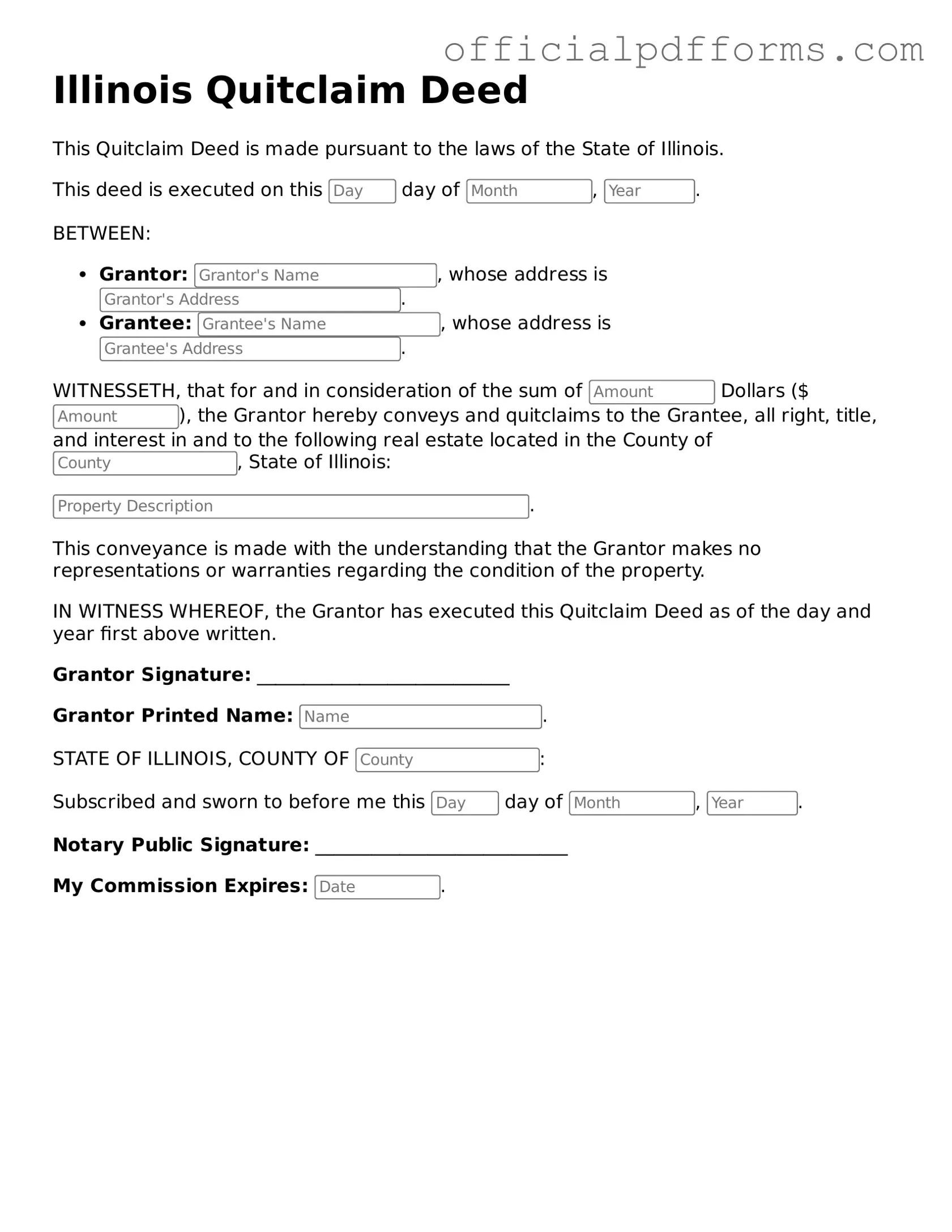What is a Quitclaim Deed in Illinois?
A Quitclaim Deed is a legal document used to transfer ownership of real estate from one party to another without making any guarantees about the property title. In Illinois, this type of deed allows the grantor (the person transferring the property) to relinquish their interest in the property to the grantee (the person receiving the property). It is often used in situations such as transferring property between family members or in divorce settlements.
When should I use a Quitclaim Deed?
A Quitclaim Deed is typically used in specific situations, including:
-
Transferring property between family members.
-
Transferring property as part of a divorce settlement.
-
Clearing up title issues, such as adding or removing a name from the title.
-
Transferring property to a trust or business entity.
However, it is important to note that a Quitclaim Deed does not provide any warranty or guarantee regarding the title, so it should not be used when buying or selling property in a traditional real estate transaction.
The Illinois Quitclaim Deed form requires several key pieces of information, including:
-
The names and addresses of the grantor and grantee.
-
A legal description of the property being transferred.
-
The date of the transfer.
-
The signature of the grantor, which must be notarized.
Additional details, such as the property’s tax identification number, may also be included for clarity.
To complete the Quitclaim Deed form, follow these steps:
-
Gather the necessary information about the property and the parties involved.
-
Fill out the form, ensuring all required fields are completed accurately.
-
Have the grantor sign the document in the presence of a notary public.
-
File the completed deed with the appropriate county recorder’s office.
Double-check the form for any errors before submitting it, as inaccuracies can cause delays or complications.
Is a Quitclaim Deed legally binding?
Yes, a properly executed Quitclaim Deed is legally binding once it is signed by the grantor and notarized. However, it must also be recorded with the local county recorder’s office to provide public notice of the transfer. Recording the deed helps protect the rights of the grantee and establishes a public record of ownership.
Are there any fees associated with filing a Quitclaim Deed in Illinois?
Yes, there are typically fees associated with filing a Quitclaim Deed in Illinois. These fees can vary by county and may include recording fees and, in some cases, transfer taxes. It is advisable to check with the local county recorder’s office for the specific fees applicable to your situation.
Can a Quitclaim Deed be revoked?
Once a Quitclaim Deed is executed and recorded, it cannot be revoked unilaterally. However, if both parties agree, they can execute a new deed to reverse the transfer. This process may involve creating another Quitclaim Deed to transfer the property back to the original grantor or to a new grantee.
Do I need an attorney to prepare a Quitclaim Deed?
While it is not legally required to have an attorney prepare a Quitclaim Deed, it is often advisable. An attorney can ensure that the deed is completed correctly and complies with all legal requirements. They can also provide guidance on any potential implications of the transfer and help address any specific concerns you may have.
Illinois Quitclaim Deed forms can be obtained from various sources, including:
-
Local county recorder’s office websites, which may provide downloadable forms.
-
Legal stationery stores that sell real estate forms.
-
Online legal form providers that offer customizable Quitclaim Deed templates.
Make sure to use a form that complies with Illinois state laws to ensure its validity.
